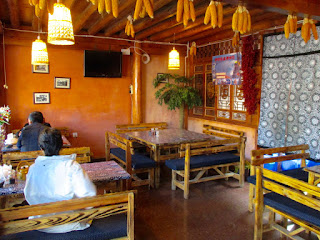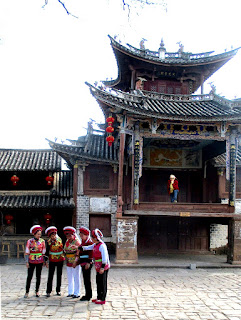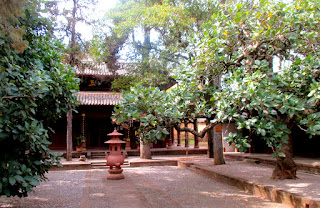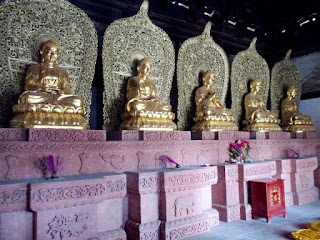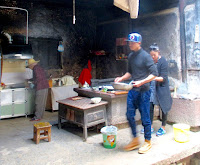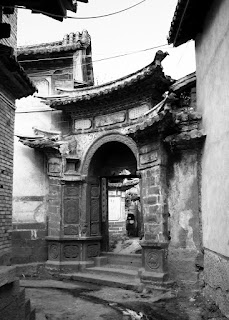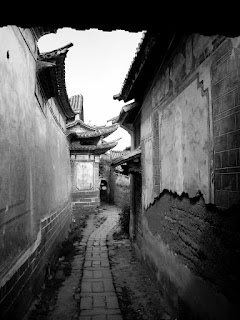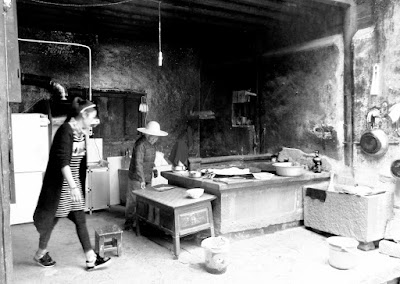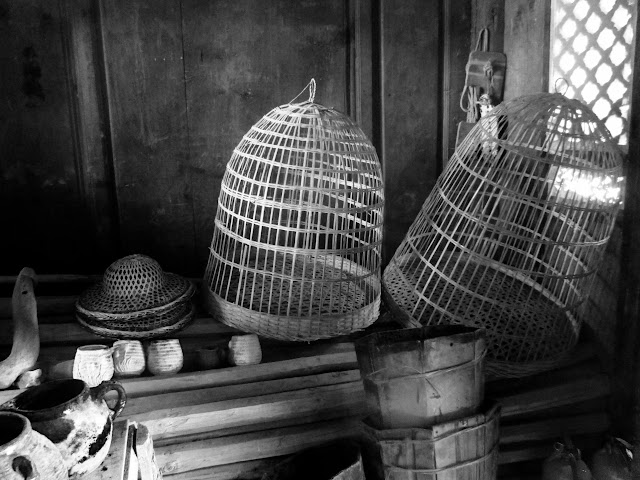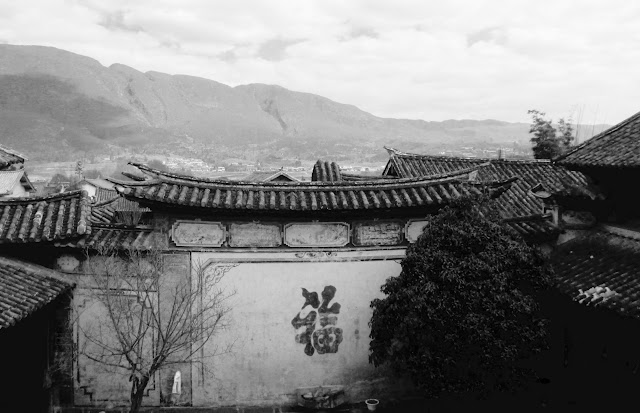 |
| complimentary condoms |
This
little item fell out of the TV cabinet in our room at Cato Inn this morning. Apparently
supplied complimentary by the government--to facilitate the
now-defunct one-child policy I imagine.
 |
| entrance gate to Shibaoshan |
We
hired a car and driver to drive us up the winding road, honking and passing regularly, to the entrance to Shibaoshan
(Stone Treasure Mountain), about an hour's exhilarating and seat grabbing drive from Shaxi, where we
were to take a tour bus within the national park. According to Road
Buddy's guide book (I call it the “bible”) the tour bus was supposed to drive from one point of interest to another in the national park. Wrong.
 |
| oddly Hindu-ish looking bas-relief carvings - (photo taken on the way down) |
The
first anomaly we noticed was that the tour bus bypassed what looked
like the first obvious point of interest (some bas relief carvings on
a cliff face that looked, in glancing as we sped past, like Hindu
figures). Then the bus just climbed and climbed up the winding road
full of switchbacks (with nary a point of interest in sight) in what
looked, to our overheated imaginations, like another wild-goose chase.
We had began to wonder and were holding a fevered discussion about “what
the hell is going on here?” when the bus finally stopped and
dropped us off. We looked around and at the driver, perplexed, but,
looking bored, he merely pointed off in the direction of a gate that, we assumed,
we were supposed to follow.
 |
| gateway to the mountain trails |
 |
| the hiking trail |
So,
we followed, went through a gateway, that turned out to be the entrance to a steep
hiking trail, well-enough paved with many steps, that kept going down
until we came to a fork in the path and a sign in Chinese. We chose
the left path that led to Shizhong Temple, a temple perched on, and
partially carved out of, the cliffside. There were now indications
that many of the places in “the bible” were actually located in
the area and had to be accessed on foot, not at comfortable bus stops
for quick off, photo shoot, and on again to the next stop. We thus,
spent the next two to three hours hiking up and down (not to say trudging at times) these mountain
trails.
 |
| take your pick |
 |
| "seems to grow out of the red rock" |
 |
| eroded sandstone |
Shizhong
Temple seems to grow out of the red rock in which it is embedded in
its green forested landscape. Unfortunately the temple seemed to be
guarded by some kind of stern looking police guards instead to the usual monks
hanging around Buddhist temples. We were informed that no photos were
allowed. One of them shadowed us as we climbed up to the part of the
temple that has a group of Buddhist figures carved in the rock. The
temple facade is merely a gallery about 2 meters wide fronting the
cliff face in which the Buddhas are directly carved. I was able to
evade our shadow and grab one quick photo before he suddenly reappeared, unsmiling, from another direction. Whether he caught me or not, I don't know,
but I did get one shot of the carved figures. He did seem to be
watching (always unsmiling) more closely though!
 |
| main courtyard of Shizhong Temple |
 |
the forbidden photo -
figures carved directly into the cliff face |
 |
| frescoes on cliff outside the temple |
The
carvings in the Shizhong Temple were carved in the Nanzhao Kingdon period (8th
- 9th Centuries CE) when Buddhism was introduced into
Yunnan and the Dali/Shaxi region. There are some nice frescoes also
done in the cliffside around the side and back of the main temple
complex where photos were not forbidden. Another interesting thing was the rock formation in much of the area. The eroded red sandstone (see above),
part of the so-called Danxia landscape, is reminiscent of the scaly skin
of some amphibians such as alligators and crocodiles.
 |
| Shizhong Temple |
 |
| hexagonal pavilion overlooking the valley of Shibaoshan |
 |
| Shizhong Temple in its Shibaoshan mountain landscape |
We
were pretty exhausted as we climbed back up to the bus area and
gratefully sank into a seat to await departure, which took about 15 to
20 minutes, for the trip back to the entrance gate where we met our driver for the trip back to Shaxi.







































